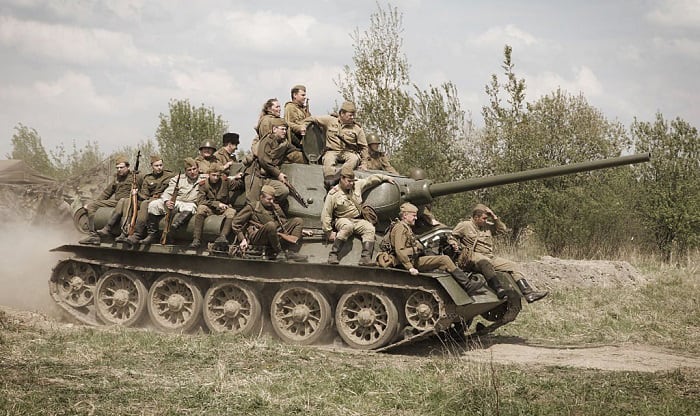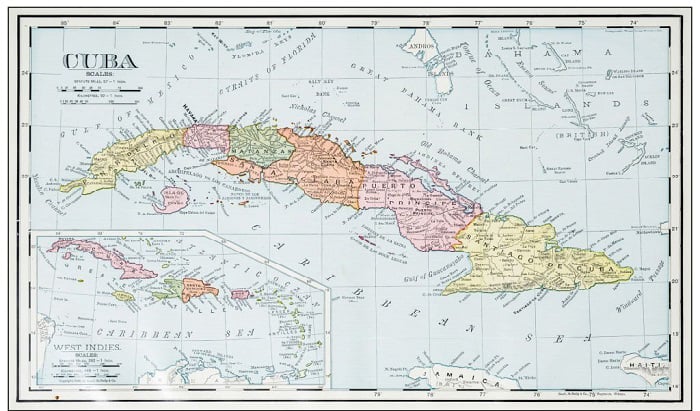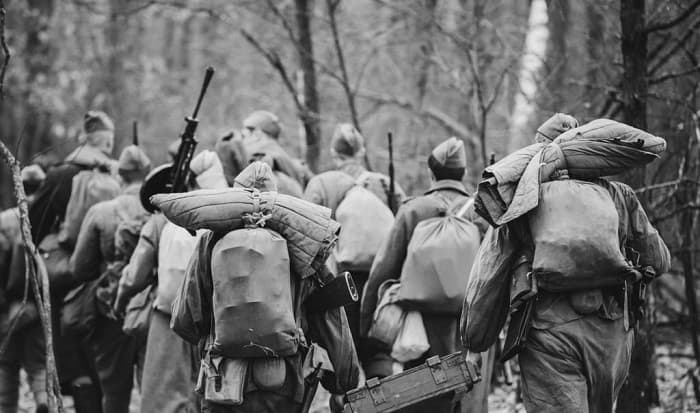If you are scouring the Internet for the answer to this U.S History quiz question, “According to this map, what region of Cuba had the greatest number of Russian military camps?” you will be glad to know that we have it here.
To earn the mark, you should write down “Havana.”
However, to make sure you have a solid grasp of this topic for other short and long-form questions, keep reading. We will provide you with all the essentials below. So, read until the end!
Table of Contents
Cuban Missile Crisis
This was the United States vs. the Soviet Union confrontation that lasted for 35 days as part of the Cold War. It occurred between October 16 and November 20, 1962.
The crisis led to an international emergency, where the Soviet threat of missiles in Cuba was close to escalating into a full-scale nuclear war.
The Two Sides
On one side were Cuba and the Soviet Union, supported by the Warsaw Pact.
On the other were the United States, Italy, and Turkey, supported by NATO and OAS.
The Cuban leaders included:
- Fidel Castro
- Raul Castro
- Che Guevara
The Soviet Union leaders included:
- Nikita Khrushchev
- Rodion Malinovsky
- Matvei Zakharov
- Sergey Biryuzov
- Issa Aliyev
- Georgy Abashvili
The U.S. leaders were:
- John F. Kennedy
- Robert McNamara
- Maxwell D. Taylor
- Curtis LeMay
- George W. Anderson
- Robert F. Kennedy
The Italian leaders were:
- Amintore Fanfani
- Giulio Andreotti
The Turkish leaders were:
- Cemal Gursel
- IIhami Sancar
Why Did The Crisis Happen?
During a secret meeting, the Soviet First Secretary Nikita Khrushchev and the Cuban Prime Minister Fidel Castro agreed to set nuclear missiles on the island to respond to the American Jupiter ballistic missiles in Italy and Turkey. In addition, many sources point out the failed ‘Bay of Pigs Invasion of 1961’ as a contributing factor.
The placing of nuclear missiles on the island was an implicit declaration that if the U.S. were to launch a nuclear attack, the Soviet Union would launch one right back (a retaliatory nuclear strike).
Other Reasons for The Nuclear Missiles Placing
- The capabilities of Soviet Union missiles at the time were not solid enough to reach the U.S.; thus it was necessary to move their missiles to a location where that was possible.
- Khrushchev wanted to pull West Berlin into Soviet orbit for its strategic importance. The idea was that the missiles would be a deterrent to western countermeasures or an item of exchange.
- The Soviet Union and Cuba felt that the U.S was trying to overrun Cuba. Hence, to neutralize the threat and keep Cuba in the Socialist Bloc, the Soviet Union placed missiles.
- By placing the missiles, the Soviet Union showed its support for Cuba and Cubans.
How Did The Placing of Missiles Go?
Everything from the planning and preparation to the transporting and deploying of the missiles were done in secrecy. Only a few were aware of the exact nature of the mission.
- The troops were even given misdirection as they were told that they were going to a cold region.
- Missile construction specialists arrived in Cuba as “machine operators”, “irrigation specialists”, and “agricultural specialists”.
- The missiles were camouflaged by palm trees.
- The Soviet Union’s code-name for the placing was Operation Anadyr. Anadyr was ambiguous and could denote the river that flows into the Bering Sea, the Chukotsky District capital, or a bomber base in the eastern region.
What Happened Afterward?
In early August 1962, the U.S suspected their missile placements. Hence, its intelligence services strived to gather information about sightings. Eventually, an Air Force U-2 spy plane discovered ballistic missile facilities (medium-range and intermediate-range).
With Congressional elections just around the corner, the discovery of Soviet missile placement became enmeshed in American politics.
At the end of August, Senator Kenneth Keating criticized the Kennedy administration for covering up a major threat to the country.
In response, President John F. Kennedy convened a meeting of the 9 National Security Council members and 5 key advisers to seek a solution.
Note: The 14 figures later became known as the EXCOMM (Executive Committee of the National Security Council).
The options were:
- Do nothing, as it was not the first time Americans faced vulnerability to Soviet missiles.
- Use diplomatic pressure to “persuade” the Soviet Union to remove the missiles.
- Secretly offer Cuba the choice of turning back on the Soviets or being invaded.
- Invade Cuba with full force and overthrow Castro.
- Use the Air Force to attack all the identified missile sites.
- Use the Navy to block any missiles from coming to Cuba.
After thorough consideration, President Kennedy decided to order a naval “quarantine” to stop more missiles from reaching Cuba.
The term “quarantine” was used rather than “blockade” to avoid implications of war. The U.S declared that it would not allow offensive weapons to be delivered from the Soviet Union to Cuba and any weapons already in Cuba shall be dismantled and returned.
After a few days of negotiations, Kennedy and Khrushchev reached an agreement.
The Soviets would publicly dismantle the offensive weapons in Cuba and take them back; plus, the United Nations would verify this. In exchange, the U.S would publicly declare that it would not invade Cuba again.
In addition, the U.S secretly agreed to dismantle all of its Jupiter MRBMs in Turkey, which were deployed against the Soviet Union.
The naval quarantine remained in place until November 20, 1962.
Conclusion
As you have read, Havana is the region that contained the most Russian missile sites during the Cuban Missile Crisis in 1962. Aside from answering the question, “According to this map, what region of Cuba had the greatest number of Russian military camps?” you should now know the background context and the events that happened in the 35-day confrontation.
Hopefully, this has been informative. If you have any further questions, leave a comment below. Help us share this article with other readers as well.

I am Everett Bledsoe, taking on the responsibility of content producer for The Soldiers Project. My purpose in this project is to give honest reviews on the gear utilized and tested over time. Of course, you cannot go wrong when checking out our package of information and guide, too, as they come from reliable sources and years of experience.



